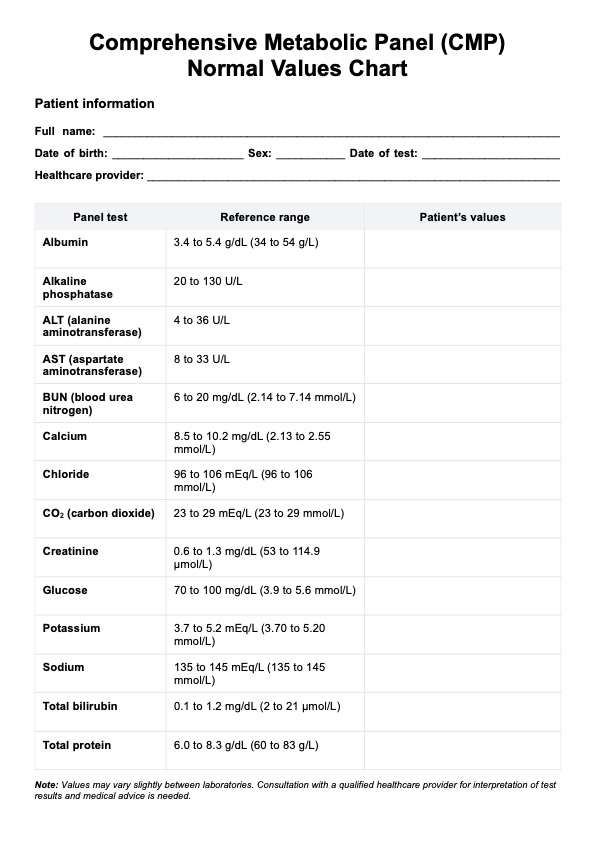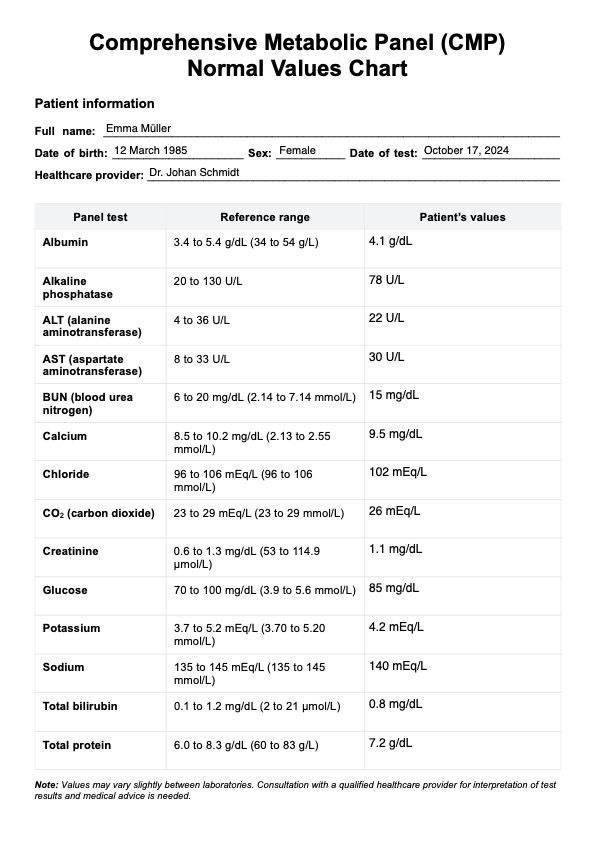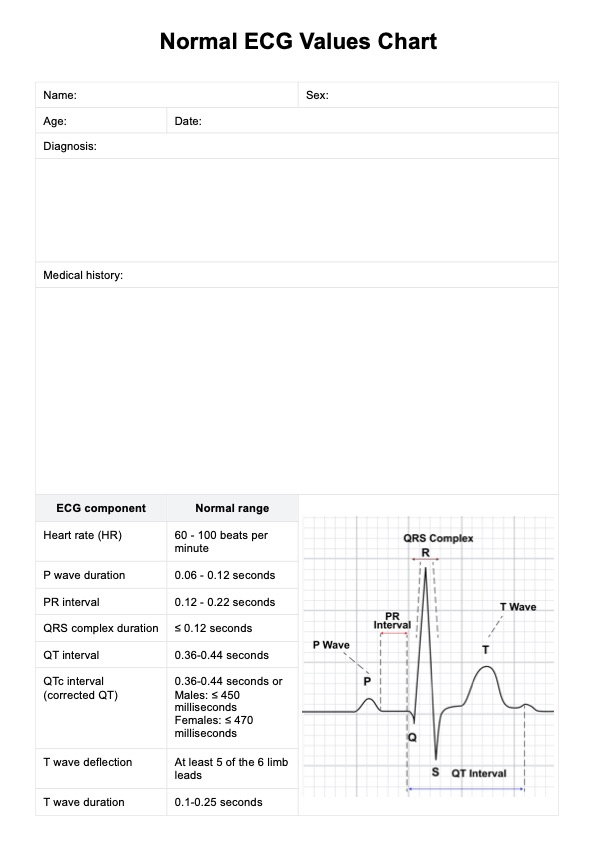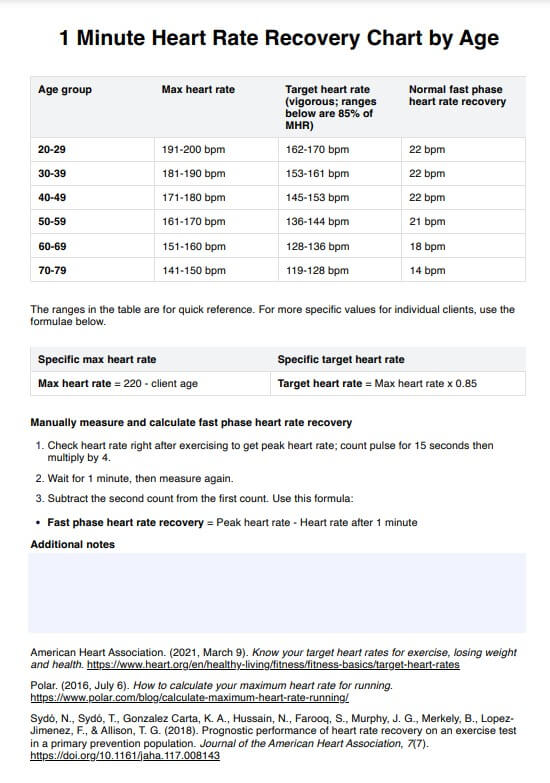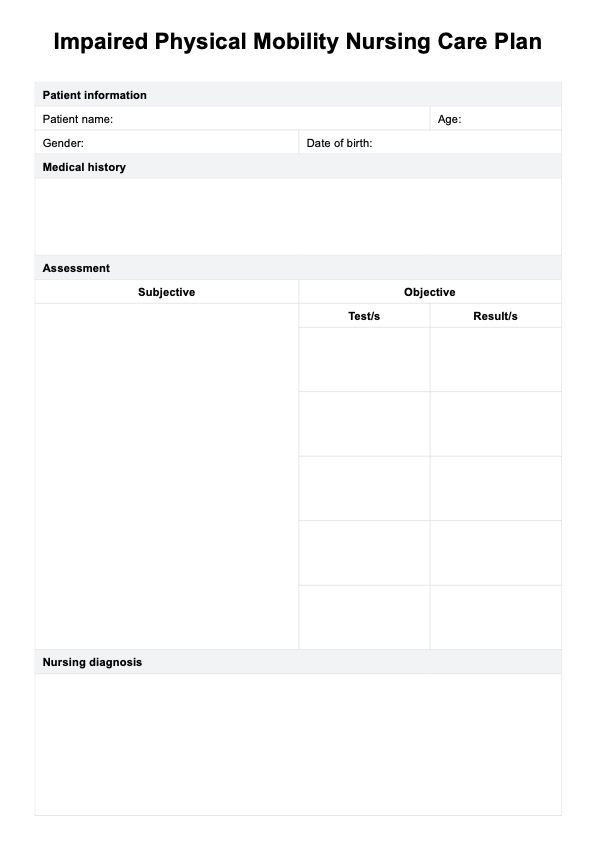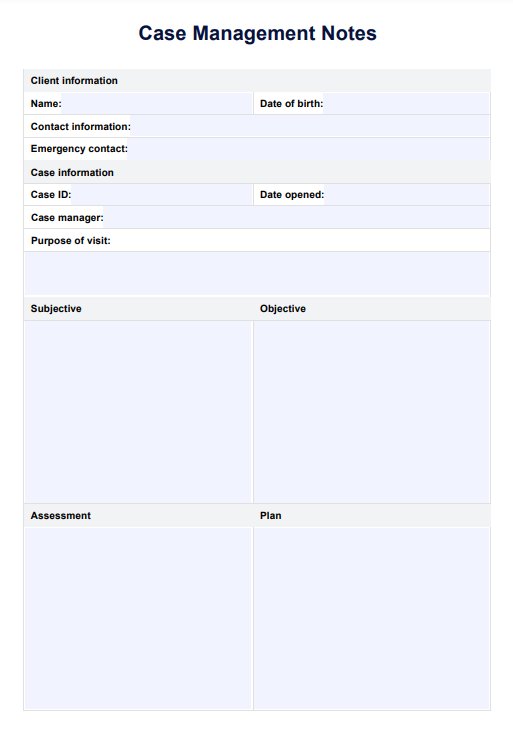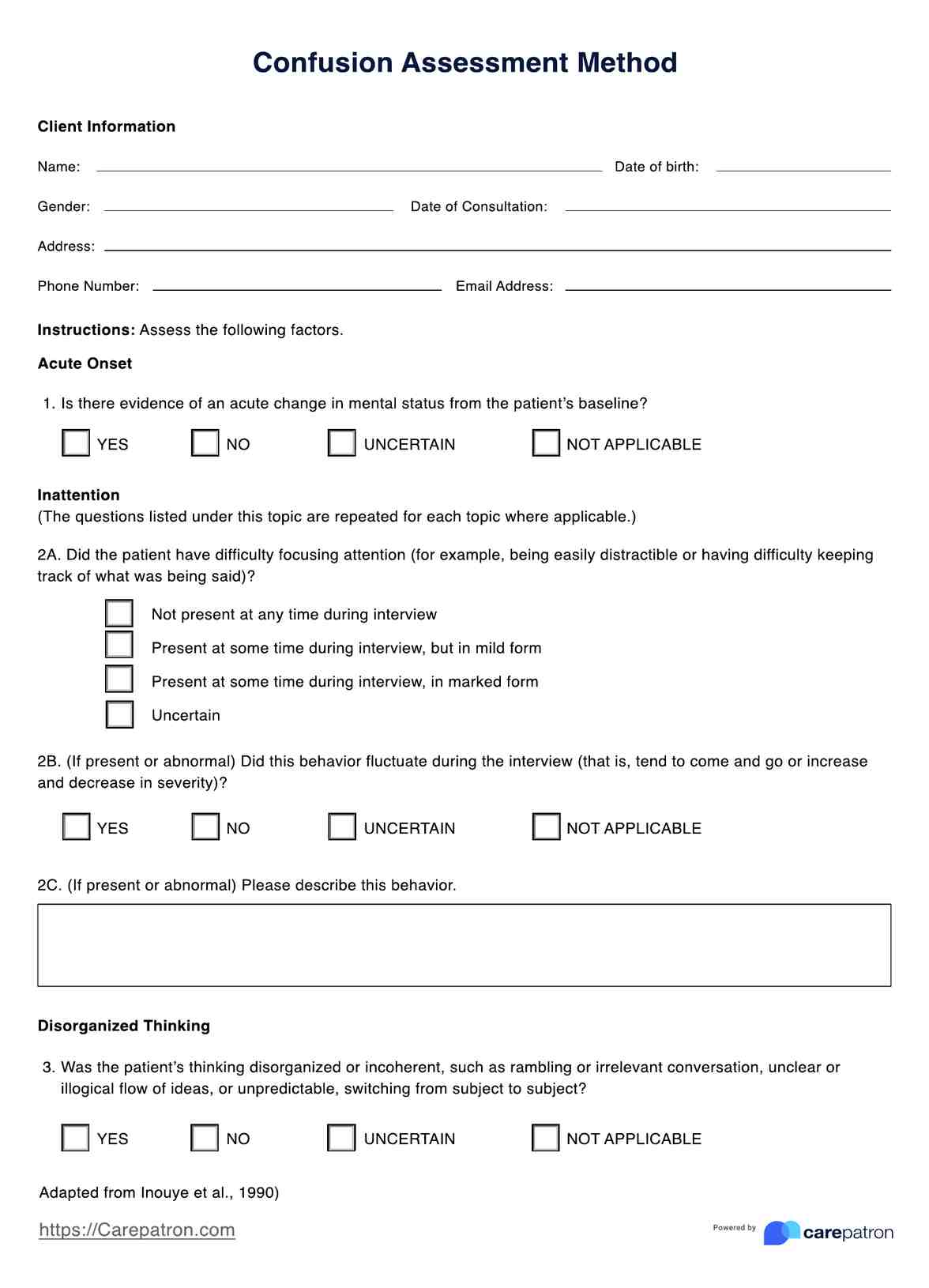CMP Normal Values Chart
Use the CMP Normal Values Chart for health assessments. Download our free PDF for easy reference and reliable medical insights.


What is a CMP Normal Values Chart?
A Comprehensive Metabolic Panel (CMP) Normal Values Chart is an essential reference tool in healthcare. It provides a set of standard reference ranges for key biochemical markers that are critical in evaluating a patient's metabolic and organ function.
The comprehensive metabolic panel test includes 14 tests, offering more comprehensive insights compared to the basic metabolic panel, which only has 8. Here are the various blood tests included in the CMP:
- Albumin blood test
- Alkaline phosphatase blood test
- ALT (alanine aminotransferase) blood test
- AST (aspartate aminotransferase) blood test
- BUN (blood urea nitrogen) blood test
- Calcium blood test
- Chloride blood test
- CO2 (carbon dioxide) test
- Creatinine blood test
- Glucose blood test
- Potassium blood test
- Sodium blood test
- Total bilirubin blood test
- Total protein test
The primary purpose of the CMP values chart is to aid healthcare professionals in interpreting the results of a CMP test. By comparing a patient's lab results with these normal values, physicians can identify any abnormalities that may indicate various health issues, from metabolic disorders and diabetes to liver disease and chronic kidney disease. For instance, elevated glucose levels might suggest diabetes, while abnormal liver enzyme levels could point to liver damage or disease.
Moreover, the CMP chart helps track progress in the treatment plan and adjust medications as needed. It is a quick reference guide in clinical practice that supports decision-making. It's particularly valuable in emergency settings where rapid diagnosis is crucial.
CMP Normal Values Chart Template
CMP Normal Values Chart Example
How does this comprehensive metabolic panel (CMP) chart work?
The process of using a Comprehensive Metabolic Panel (CMP) Normal Values Chart in clinical practice involves several key steps:
Step 1: Download the chart
Click on the download button in this guide. Save it to your device. If you have a Carepatron account, you may also grab it from the templates library.
Step 2: Collect blood sample
This is typically done by drawing blood from a vein in the patient's arm. A healthcare professional, such as a nurse or phlebotomist, performs the process, ensuring the sample is collected safely and correctly.
Step 3: Analyze laboratory results
Once the blood sample is collected and sent to a laboratory for detailed analysis, the laboratory uses various techniques to measure the levels of specific substances in the blood. These substances include glucose or blood sugar, electrolytes, kidney function markers, and liver enzymes. The accuracy of this analysis is crucial for reliable diagnosis and treatment.
Step 4: Compare blood test results with normal values
In our chart, we have provided a section for the patient's results. So, after the laboratory analysis, the results are compared against the CMP reference ranges in the chart. This chart is a benchmark to determine whether the patient's levels fall within normal limits or indicate potential health issues.
Step 5: Interpret results
Finally, healthcare professionals consider the patient's overall health, medical history, and current symptoms to understand the implications of deviations from normal values. This interpretation is critical in diagnosing conditions, monitoring disease progression, or assessing treatments' effectiveness.
When would you use this chart?
The CMP Normal Values Chart is essential in various medical contexts, serving multiple purposes across healthcare settings. Its usage spans a wide range of clinical scenarios:
Routine health check-ups
One of the most common uses of the CMP Normal Values Chart is during routine health examinations. It helps assess an individual's overall health status and provides insights into vital organ functions.
Pre-surgical assessments
Before undergoing any surgical procedure, it's crucial to evaluate a patient's metabolic status to ensure they are fit for surgery. The CMP chart plays a significant role in this pre-operative evaluation.
Monitoring chronic conditions
For patients with chronic conditions like diabetes, hypertension, or kidney diseases, regular monitoring using the CMP chart is vital. It assists in tracking the progression of the disease and the effectiveness of ongoing treatments.
Evaluating symptoms
When patients present symptoms like fatigue, nausea, weight loss, or abdominal pain, the CMP chart can help pinpoint the underlying cause and differentiate between potential diagnoses.
Benefits of using this CMP Normal Values Chart
Using a CMP Normal Values Chart helps healthcare professionals like you by offering the following benefits:
It saves you time in patient care.
The chart lets you access essential reference values instantly, so you don't have to waste time searching for information. This allows you to focus more on your patients and make faster decisions.
It makes it easy for you to use and always accessible.
Whether you use it digitally or in print, the chart gives you a quick overview. Its convenience makes it a reliable tool for your daily clinical routine.
It helps you diagnose efficiently and accurately.
With standard values at your fingertips, you reduce the risk of missing essential details in lab results. This ensures you can act quickly and confidently when treating patients.
Commonly asked questions
Doctors or healthcare providers typically request a CMP routine blood test during check-ups or when monitoring ongoing health conditions. It helps them assess your organs like kidney or liver function, detect potential issues, or track changes in your overall health.
A bilirubin blood test measures the amount of bilirubin, a yellow substance made when your body breaks down old red blood cells. The test helps find issues with your liver, gallbladder, or red blood cells and can detect conditions like jaundice or liver disease.
The 14 tests included in a CMP are glucose, calcium, sodium, potassium, chloride, carbon dioxide (CO2), blood urea nitrogen (BUN), creatinine, albumin, total protein, bilirubin, alkaline phosphatase (ALP), aspartate aminotransferase (AST), and alanine aminotransferase (ALT).


